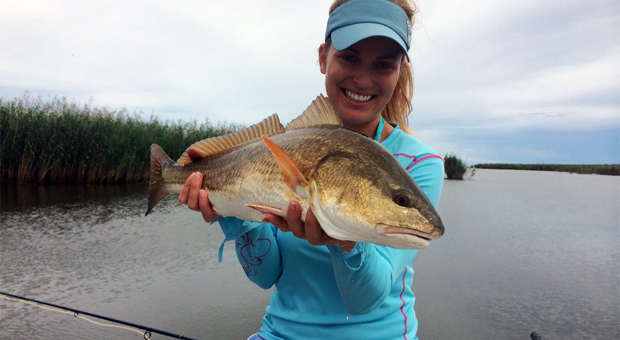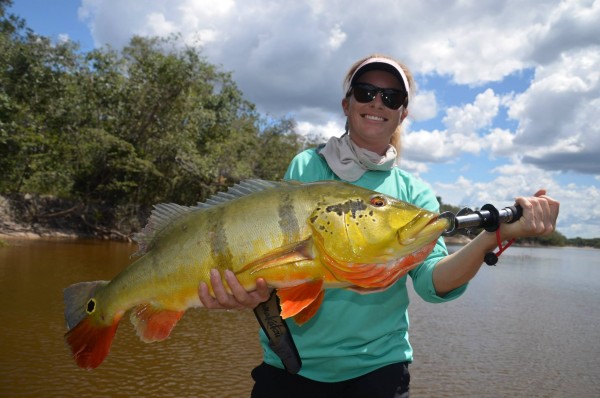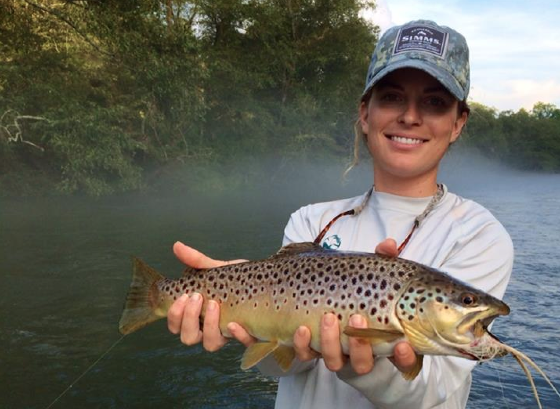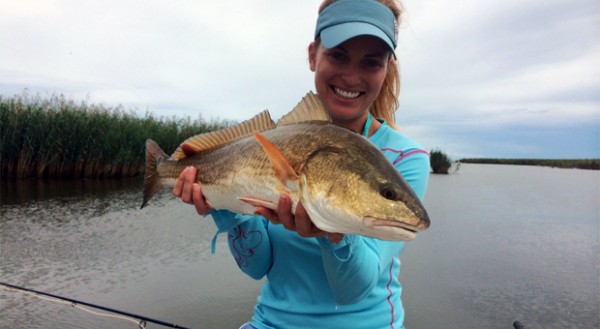Fly Girl Q&A is a new, recurring Fly Life Magazine feature focused on contemporary women in the sport of fly fishing. Enthusiasm and participation by women has never been higher within the sport than it is right now. Enjoy getting to know some of the ladies of our sport…
Alex Lovett-Woodsum
In what capacity are you currently engaged in the sport of fly fishing?
Primarily as a recreational angler. I’m also involved because I’m the Development and Communications Director for Bonefish & Tarpon Trust, a fisheries conservation organization, so I interact with a lot of anglers, guides, lodges, fly shops and other industry folks in that role. I am also the Project Lead for Project Healing Waters in Miami, teaching wounded veterans to fly fish, and I’m part of the Anglers Circle for the American Museum of Fly Fishing, which is doing an amazing job preserving the unique history of the sport.
How were you introduced to the sport?
My introduction to fly fishing came when I was eight years old on a trip to Montana with my family. We were fortunate to be connected to Paul Roos, a legendary fly angler and outfitter out there, who took me out on the river to show me the ropes. I spent the whole day flailing away casting with both hands trying to catch a trout, to no avail. Despite my frustration, I was totally hooked. Fortunately, we went to a honey hole spring creek the next day and I caught some fish, which was overshadowed by my four year old brother catching a brown trout so large it broke the fly rod.
What is it about fly fishing that “keeps you coming back”?
Fly Fishing is a truly cathartic experience for me. It is incredibly challenging, frustrating and involves extreme highs and lows. How many things do you do that make you curse like a sailor and inclined to break everything in sight, but you keep coming back for more? Because the adrenaline-charged rush of stalking a fish, casting to it and having it actually turn to eat the fly is one of the best feelings in the world.
Who were your biggest influences or mentors, male or female?
What would you consider your home fishery and what do you find so alluring and special about it?
What environmental challenges are faced by your fishery?
Unfortunately this fishery has a lot of environmental threats, many of which the effects are felt but the causes haven’t completely been identified. For the Everglades specifically (which impacts Florida Bay and beyond through runoff), the biggest issues are water quality and water quantity, both of which can in broad terms be linked to agriculture and development. The way water was mismanaged as Florida developed has become a huge problem, coupled with increased demand for water and higher levels of pollutants entering the system.
Many people think that the general water quality has significantly declined over the years, which may have contributed to a decline in the bonefish fishery in particular. Fertilizer runoff from agriculture is likely contributing to increased algae blooms, which in turn smothers seagrass. There is a lot more boat traffic and fishing pressure now than there used to be, which can certainly have an environmental impact. Coral degradation is a huge problem for the reef fisheries, and mangrove loss is having an impact on some fish like tarpon that use them as juvenile habitat. These are just a few examples of the issues faced by the fishery.
I believe that the many organizations working to solve these problems, coupled with concerned anglers and guides and management improvements, will make an impact. This is still an amazing and unique fishery and can be for generations to come, but we all have to do our part to be aware of the issues and contribute to managing them and course-correcting as best we can. We’ve come a long way–not long ago people killed pretty much every bonefish, tarpon and permit they caught and now in fly fishing they are all almost entirely catch and release fisheries and people are much more careful about how they fight and handle the fish.
When you are not fishing, what are you doing?
You have the day off. What are you fishing for and where?
A few months ago I would have said tarpon. Sight-fishing for them is such a rush. I don’t care a bit about landing them anymore, just like to see them eat a fly and jump a few times. That said, I’m starting to turn my focus towards permit because I haven’t caught many on fly, and they are the most frustrating and challenging fish out there. Just when I started to think I was halfway decent at fly fishing, I went permit fishing. That really knocks you down a few notches, but has also made me determined to fish for them more.
What charitable organizations or causes do you support? Why is this important to you?
Where would you go to fish if there were zero restrictions on expense, travel, etc…? Why?
Toss up between the Ponoi in Russia for Atlantic salmon or the Seychelles for an opportunity to catch trevally, milkfish and Indo-Pacific permit. Both are such iconic and beautiful places with epic fishing. Can’t beat that combination. I think I’d lean towards the latter because I prefer being warm these days and there are so many different species to catch.








